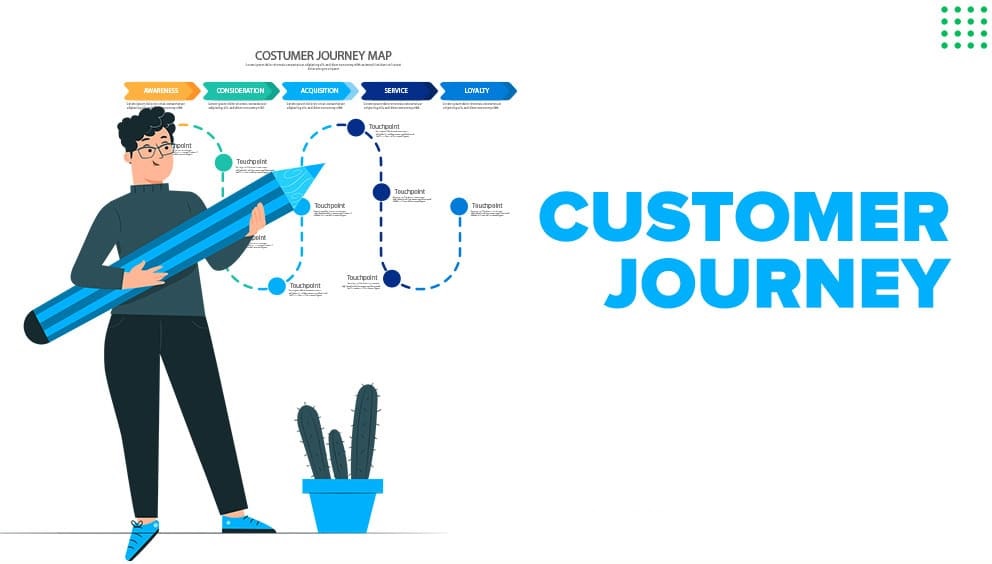Crafting Personalized Customer Journeys: Strategies for Success
Taking the plunge into personalized customer journeys can feel like a big undertaking. But with the help of some thoughtful strategies, you can build powerful connections with your customers that will bring results for your business.
What are personalized customer journeys?
Personalized customer journeys are individualized interactions that meet each customer’s specific needs and preferences. This helps to create an engaging experience that resonates with customers on an emotional level, making them more likely to be loyal to your brand and keep coming back for more.
By understanding the customer journey and focusing on delivering value at every step, you can craft experiences that solve their pain points and make them feel seen, understood, and respected by your company. With the right approach, personalized customer journeys can have a lasting impact on both your customers and your business.
What really matters for personalized customer journeys
#1 Understanding Your Customers
Crafting personalized customer journeys is a powerful tool for success, but it requires more than just understanding your target audience. It’s important to gain an in-depth knowledge of your customers through gathering data and analyzing their behavior, as well as creating customer personas.
Gathering Customer Data
Having access to the right data can help you to make informed decisions about how you interact with your customers and tailor experiences that are relevant to them. This could involve studying website analytics, market research, surveys and interviews, social media insights and lead intelligence.
Analyzing Customer Behavior
With a comprehensive dataset at hand, you can start to analyze customer behavior. This involves understanding why they behave the way they do, predicting future trends and uncovering what makes them tick so that you can adjust strategies accordingly.
Creating Customer Personas
Having accurate information on each customer segment helps you create customer personas – profiles which give a snapshot of who they are and their needs. This enables you to develop effective strategies for each persona so that every single one of your customers feels valued by your company. 📢
#2 Mapping the Customer Journey

Crafting an effective customer journey requires more than just understanding customer behavior and creating customer personas – it’s also essential to map out the touchpoints used throughout the entire journey. Here’s a look at how you can achieve that:
Identifying Customer Touchpoints
The first step is to identify customer touchpoints, which are any points of contact between your business and customers. This could include emails, website visits, phone calls or even social media interactions. It’s important to remember that each touchpoint should be evaluated from the customer’s perspective in order to make it genuinely useful for them.
Creating a Journey Map
Create an effective journey map that outlines different stages on the customer’s path such as awareness, consideration and purchase. You can then start plotting individual touchpoints along the journey and connecting them together to form one big picture of what your customers experience when interacting with your company.
Prioritizing Touchpoints for Personalization
Prioritize all your touchpoints according to their importance in personalizing the customer experience. Some may need more attention than others due to their potential impact on key decisions along the path such as purchase or renewal. Pay special attention to these crucial moments and you will soon see a significant improvement in customer satisfaction levels!
Personalization Strategies
Personalization plays an important part in creating a successful customer experience, and there are various strategies you can use to ensure your customers feel truly valued. Here’s how:
Email Marketing
Email marketing is one of the most powerful personalization tactics available since it can be used to tailor messages to individual customers. Segmenting email lists allows businesses to craft unique emails that really connect with each customer and create a sense of belonging. 💌
Website Personalization
Website personalization is also essential when trying to build relationships with customers. This could include features like personalized product recommendations or displaying content that’s specific to their interests. You could even go one step further and customize the website layout for different user types such as new users, returning users or power users! 🚀
Social Media Personalization
Social media platforms are great for interacting with customers on a more personal level – from answering customer queries and responding to feedback promptly, to launching targeted campaigns on social networks like Twitter, Facebook or Instagram. Social media definitely provides plenty of chances for businesses to target individual audience members with relevant content. 📲
Personalized Offers & Promotions
Creating personalized offers and discounts based on past buying behavior is another great way to make sure your customers feel appreciated. For example, if you detect that a customer has recently purchased an escape room certain product, it may be worth sending them an upsell-exclusive offer on something puzzle related they might enjoy alsoneed soon. By offering tailored rewards and deals based on their needs, you can show your customers that you really care – something they won’t forget in a hurry! 🤩
Tools for Personalization
Using the right tools is critical when it comes to personalizing the customer experience in a meaningful way. Here are some of the most effective options out there:
Customer Relationship Management Software (CRM)
Customer relationship management software (CRM) is essential for any business that wants to stay organized and keep track of customer interactions. It helps businesses store all customer data in one central database, making it easier to quickly create personalized experiences for each individual customer.
Marketing Automation Tools
Marketing automation tools work hand-in-hand with CRMs, automating various marketing tasks such as building campaigns on social media or sending emails to customers. These can be used to send tailored messages based on customer behaviors and interests, allowing businesses to offer highly personalized experiences that really hit the mark. 🤖
Artificial Intelligence (AI) & Machine Learning
Lastly, artificial intelligence (AI) and machine learning technologies are becoming increasingly popular ways for businesses to deliver incredibly personalized experiences like never before. By using predictive analytics, AI can anticipate the needs of customers and make more informed decisions when it comes to providing tailored content or offers.
Implementing Personalization
Implementing personalization strategies is no easy task, but with the right approach, it can be done! Here’s what you need to consider:
Creating Personalized Content
Creating personalized content that truly speaks to your customers is the cornerstone of successful customer experience personalization. Think about their individual interests, needs and preferences and make sure your content reflects this. This could include things like customizing product recommendations or providing tailored prompts on social media.
Testing & Iterating
Once you have some personalized content ready, it’s important to test it out. A/B testing different versions of content can help you determine which works best and tweak accordingly for maximum impact. Don’t forget to continually iterate – there’s always room for improvement!
Monitoring Effectiveness
Finally, don’t forget the importance of monitoring effectiveness constantly. Keeping track of customer behaviors such as click rates or time spent on a particular page helps inform decisions on how best to create future personalized content. With a few tweaks here and there, businesses are able to build better relationships with their customers over time.
Future of Personalization
The future of personalization is looking brighter than ever. Here’s how businesses can make sure they’re staying ahead of the curve:
Integrating New Technologies
Integrating new technologies into customer experience personalization strategies is key for businesses to keep up with changing customer behaviors. This could include things like using voice assistants to simulate a real conversation, digital adoption platforms (DAPs) for personalized in-app messaging and product-led growth, AI-driven analytics for predictive insights or virtual reality used in marketing campaigns. 🤖
Anticipating Customer Needs
In addition, more and more businesses are looking for ways to anticipate their customers’ needs before they even know what they want. With predictive analytics and data from past customer interactions, companies have the power to deliver highly personalized experiences that are tailored specifically to each individual customer. 🦄
Providing an Exceptional Experience
Last but not least, providing an exceptional experience is essential no matter what industry you’re in – there’s no substitute for excellent service! By utilizing all the technologies available, businesses can create an unforgettable experience that makes customers feel valued and appreciated. 🛍
Conclusion
To make the most of customer experience personalization, businesses should look to integrate new technologies, anticipate their customers’ needs and provide an exceptional experience. Testing and iterating different versions of content is key for success, as it helps build relationships with customers and foster loyalty over time. The possibilities available through innovative technologies are endless – get started now!







